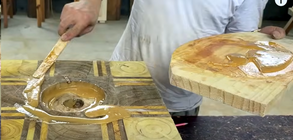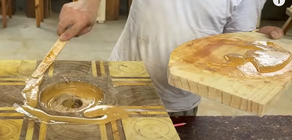Took a screen grab off Youtube. I see a number of Youtubers (or may be the same prolific guy) using this type glue. With the light tan color it looks to me like my favorite, Weldwood Plastic Resin glue. It came as a powder to be mixed with water. It's rigid when cured, no flex like Titebond. Not water proof though.
I did a number of items from furniture to turned objects with Weldwood glue some from 30+ years ago, never a glue failure. . Then about 10 years ago I ran out and managed to find it at only one distributor in a gallon container. Probably the formaldehyde content is what killed it off.
Anyone remember it?

I did a number of items from furniture to turned objects with Weldwood glue some from 30+ years ago, never a glue failure. . Then about 10 years ago I ran out and managed to find it at only one distributor in a gallon container. Probably the formaldehyde content is what killed it off.
Anyone remember it?


